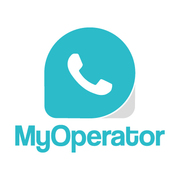
Best Interactive Voice Response (IVR) Systems 2025
What are Interactive Voice Response Systems? Interactive Voice Response (IVR) Systems are customizable, automated systems to manage inbound and outbound calls. IVR Systems can be programmed to route customer calls, record and play audio messages, manage on-hold calls, recognize phone key input to process payments, and perform other call assistance tasks. IVR Systems can integrate with cloud phone systems, VoIP Providers, and traditional phone systems. IVR Systems can automate the process of ...
We’ve collected videos, features, and capabilities below. Take me there.
All Products
Learn More about Interactive Voice Response (IVR) Software
What are Interactive Voice Response Systems?
Interactive Voice Response (IVR) Systems are customizable, automated systems to manage inbound and outbound calls. IVR Systems can be programmed to route customer calls, record and play audio messages, manage on-hold calls, recognize phone key input to process payments, and perform other call assistance tasks. IVR Systems can integrate with cloud phone systems, VoIP Providers, and traditional phone systems.
IVR Systems can automate the process of connecting callers with the services they need, making them efficient and cost-effective ways to manage large call volumes. Most IVR Systems also come with integrated reporting and analytics systems, as well as survey creation and distribution tools. As a result, they grant visibility into productivity, efficiency, and customer satisfaction. Finally, the largest IVR System advantage is that it allows callers to resolve some issues entirely through self-service, which cuts down on the number of calls agents will need to manage.
IVR Systems have similar uses as Contact Center Software and Help Desk Software, namely that products in each category are used to connect callers with specialists or departments. IVR Systems are different from those because they automate the call routing process and provide self-service options to customers. IVR Systems can then be used alongside contact center and help desk solutions to help reduce the workload for agents.
Interactive Voice Response Systems Features
The most common Interactive Voice Response Systems features are:
- Programmable auto-attendants
- Automated phone menus
- Predictive dialers
- AI, machine learning, and Natural Language integration
- VoIP integration
- Virtual number generation
- Multiple IVR menu deployment
- Multiple contact center supports
- Visual menu editors
- CRM integrations
- Customer data retrieval
- Phone key input recognition
- Omnichannel communication support
- Call logging
- Analytics and reporting features
- Automated speech recognition
- Text-to-speech features
- Customizable rulesets
- Script and menu templates
- Voice recording and automated playback
- Payment processing
- Customer and service-oriented call separation
- On-premises, web, or cloud deployment
Interactive Voice Response Systems Comparison
When choosing the best Interactive Voice Response Systems for you, consider the following:
Hardware integrations. If your agents use headsets, physical phones, or other hardware, you’ll want to make sure that the IVR System you choose can integrate with those assets. On the other hand, if you are considering incorporating hardware into your workflow, some vendors offer peripherals as part of their IVR System package.
Inbound vs. outbound IVR. Most IVR System buyers use the product to manage inbound calls, such as those coming from customers or external partners looking for services. However, some businesses need IVR Systems with outbound features, especially those that can deliver surveys, reminders, or alerts. Most products have some combination of inbound or outbound features, but some are more expensive based on the range of features offered, so it may be economical to consider whether you need these features as part of your package.
Multiple language support. IVR Systems have ways for customers and businesses to automate communication, but if you have a very large and diverse client base, you’ll want to make sure that the IVR System can support multiple languages. This may include automated or recorded messages in any language, as well as speech recognition services and Natural Conversation AI that can account for multiple languages or accents.
Visual IVR. Another way to be sure you can effectively communicate with your callers is to use a visual IVR component. Visual IVRs can be accessed from the web or mobile devices, allowing users to navigate menus and services using interactive, visual presentations. This is especially helpful for businesses striving to provide accessibility accommodations. If the product itself doesn’t offer visual IVR components, consult with the vendor to see if an API solution can be integrated.
Standalone vs. integrated IVR. Some IVR Systems are sold as standalone products, while others are sold as part of a broader software or service package. Most notably, IVR may be included as a component of VoIP, call center, or help desk suites. If you have an established workflow and are looking to integrate an IVR System with your existing services, a standalone IVR will be easier to implement. Conversely, if you are incorporating a completely new suite of service software, an existing package with included IVR capabilities will most likely be better for you.
Pricing Information
Interactive Voice Response Systems pricing tiers vary based on features offered and number of users supported. The lowest pricing tiers range between $20 and $75 per user per month. Vendors can be contacted for custom pricing plans and free trials.
























